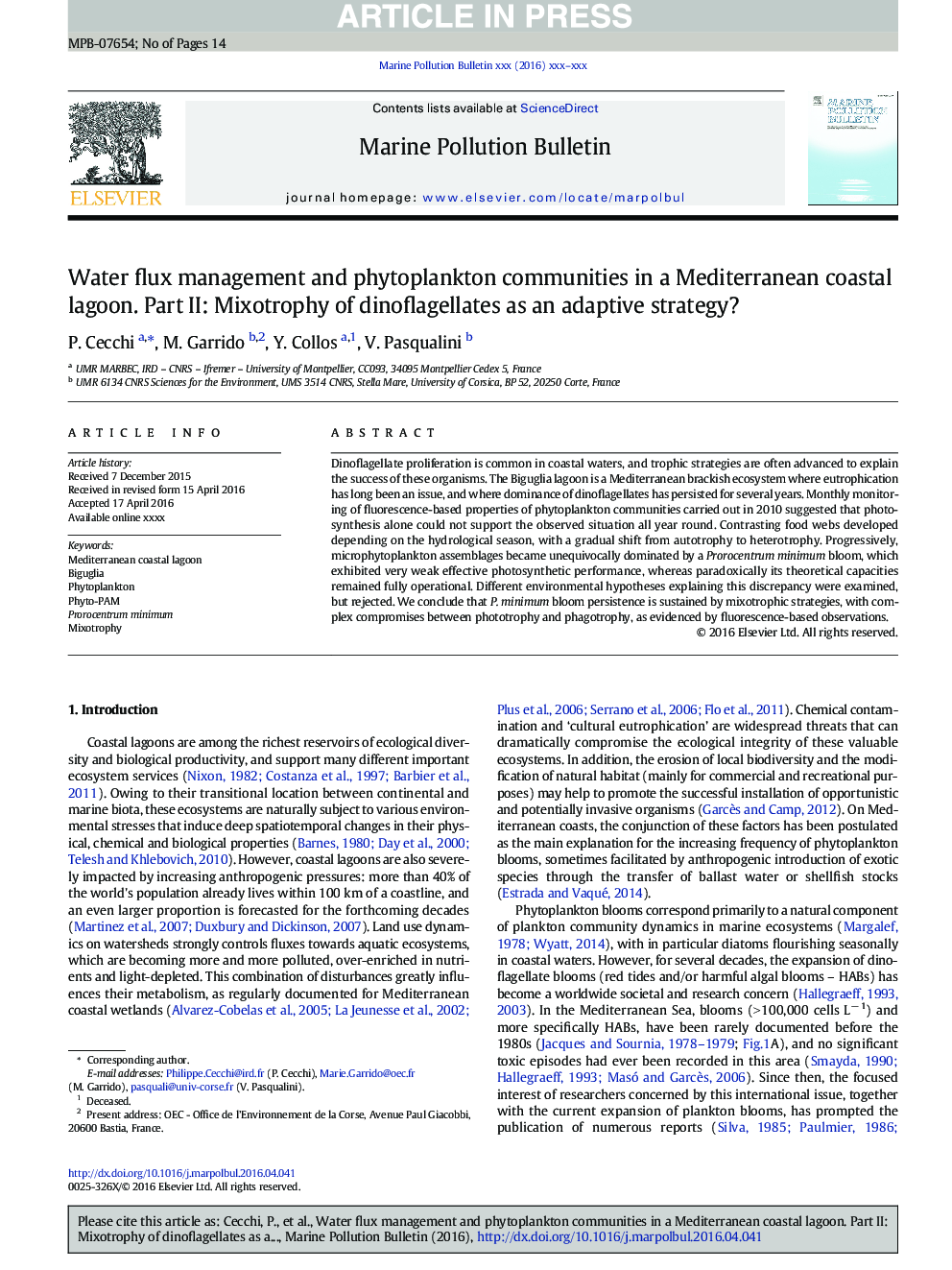| Article ID | Journal | Published Year | Pages | File Type |
|---|---|---|---|---|
| 6355932 | Marine Pollution Bulletin | 2016 | 14 Pages |
Abstract
Dinoflagellate proliferation is common in coastal waters, and trophic strategies are often advanced to explain the success of these organisms. The Biguglia lagoon is a Mediterranean brackish ecosystem where eutrophication has long been an issue, and where dominance of dinoflagellates has persisted for several years. Monthly monitoring of fluorescence-based properties of phytoplankton communities carried out in 2010 suggested that photosynthesis alone could not support the observed situation all year round. Contrasting food webs developed depending on the hydrological season, with a gradual shift from autotrophy to heterotrophy. Progressively, microphytoplankton assemblages became unequivocally dominated by a Prorocentrum minimum bloom, which exhibited very weak effective photosynthetic performance, whereas paradoxically its theoretical capacities remained fully operational. Different environmental hypotheses explaining this discrepancy were examined, but rejected. We conclude that P. minimum bloom persistence is sustained by mixotrophic strategies, with complex compromises between phototrophy and phagotrophy, as evidenced by fluorescence-based observations.
Related Topics
Physical Sciences and Engineering
Earth and Planetary Sciences
Oceanography
Authors
P. Cecchi, M. Garrido, Y. Collos, V. Pasqualini,
